What is 5G? Learn how 4G mobile connectivity will change to 5G. 5G connectivity has three characteristics as following. [1] “High speed and high capacity” (eMBB: enhanced Mobile Broadband), [2] “Low latency and High reliability” (URLLC: Ultra-Reliable and Low Latency Communications), [3] “Massive-MTC” (mMTC: massive-Machine Type Communication). Organize by three characteristics.
5G is expected to be widely used as a social infrastructure in various industries other than telecommunication field. Therefore, various requirements different from 4G connectivity are taken into consideration from the 5G use case planning and technology design stages. When it comes to 5G, not only does the data speed of smartphones increase. 5G will enter various scenes of our lives and will significantly change our daily lives.
5G characteristic [1]: High Speed and Large Capacity (eMBB: enhanced Mobile Broadband)
Utilization of radio with high frequency and wide bandwidth to 5G
In 5G era, radio frequencies that have not been used in mobile phone connectivity are used, as opposed to the frequencies of radio band used in 4G (LTE) wireless connectivity. The frequency used in 4G (LTE) is 6 GHz or less and is called Bellow 6 (B6). Bellow 6 is a frequency that is easy to use for wireless connectivity, and it is difficult to secure a wide frequency band. This is because bellow 6 band is already used for wireless connectivity for various purposes.
In 5G, radio high frequency (28 GHz band) of 6 GHz or higher, called Above 6 (A6), are also used. For frequencies above 6 GHz, a wide frequency band can be secured, enabling high-speed, large-capacity wireless connectivity.
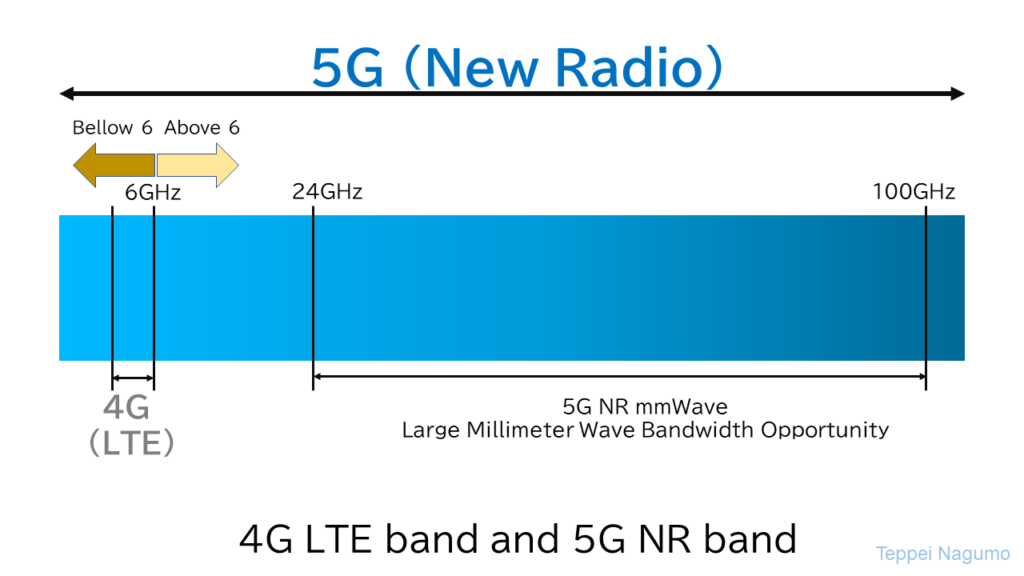
Antenna technology: Massive MIMO
Massive MIMO (Massive Multiple Input Multiple Output) is a multi-antenna technology already used in 4G (LTE). It is a technology that increases the data rate and improves the reliability of connectivity by using multiple antennas. Massive MIMO is more widely used in 5G.
The technology for wireless communication using Massive MIMO enable high-speed, large-capacity wireless communication in places where the wireless environment is stable.
Antenna Technology: Beam Forming
Beam Forming is a multi-antenna technology already used in 4G (LTE). More widely used in 5G.
With beamforming technology, it is possible to transmit radio signal only to smartphones (terminals) that moving. This technology enables efficient wireless connectivity and allows more users to communicate with the base station.
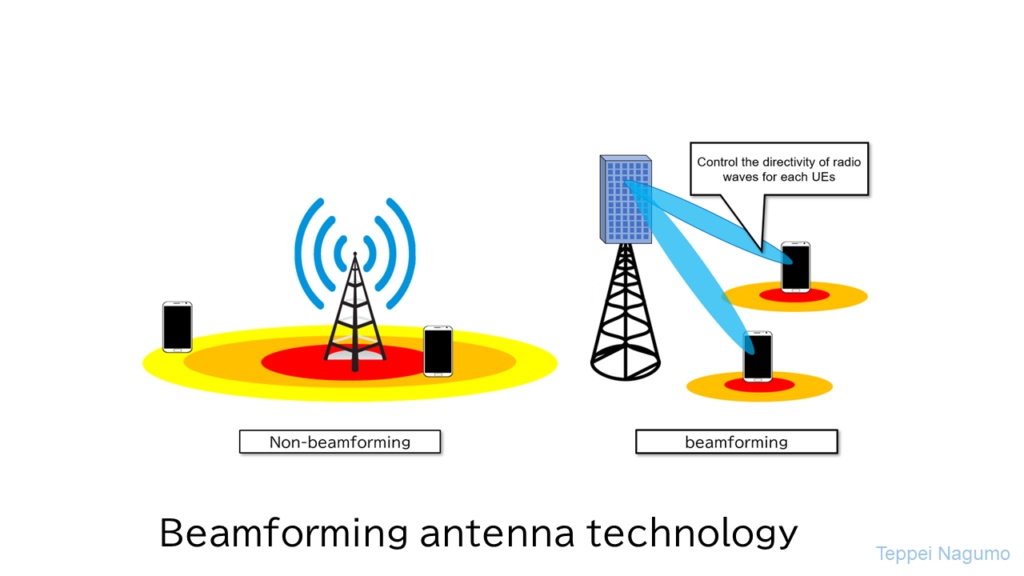
5G characteristic [2]: Ultra-Reliable and Low Latency Communications (URLLC)
Evolution of wireless interface (reduction of wireless delay)
In 5G, high-frequency radio signal will also be newly used. The specifications of the wireless interface have been changed in consideration of this. The transmission time-interval (TTI) was 1ms in 4G LTE, however it is 0.25ms, which is 1/4 in 5G NR.
Sub-Carrier Spacing, which was only 15kHz in 4G LTE, can now be selected from multiple sub-carrier intervals of 15KHz, 30kHz, 60kHz, and 120kHz in 5G NR. By increasing the width of one Sub-Carrier Spacing in this way, it is possible to transmit more data while shortening the transmission interval.
This mechanism is effective in 5G wireless connectivity because a wide continuous bandwidth can be used by using radio signal in a high frequency band. In 5G wireless, connectivity delay is reduced in this way. The figure below is referenced from the published material of Qualcomm. It is the figure which explained each subcarrier interval of 5G NR.
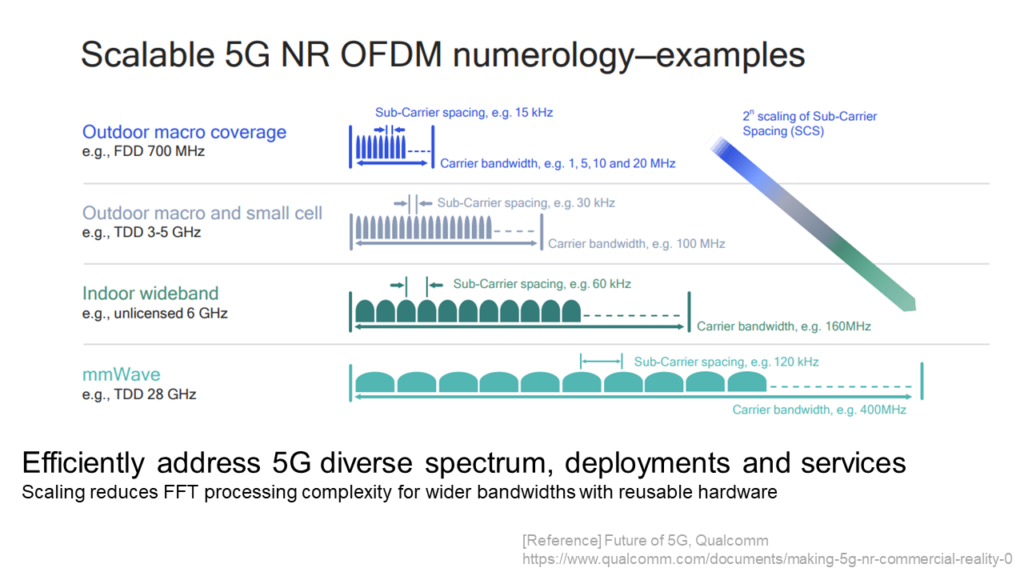
Future of 5G, Qualcomm, [PDF file]
Edge Computing: MEC (Multi-access Edge Computing)
With the spread of 5G, edge computing (MEC: Multi-Access Edge Computing) is attracting attention. MEC has two major advantages. MEC can (1) reduce latency and (2) reduce the traffic volume of the entire network, in Local, operator, national and global level
5G considers specifications for placing the server to be accessed close to the user (User terminal). If the server you are usually accessing to in a large data center is located at a network site near your home, the latency will be low. This technology is called Edge Computing (MEC: Multi-Access Edge Computing) and is a method to achieve low latency. By shortening distance of data traveled, there is also the advantage of reducing the traffic of the entire network.
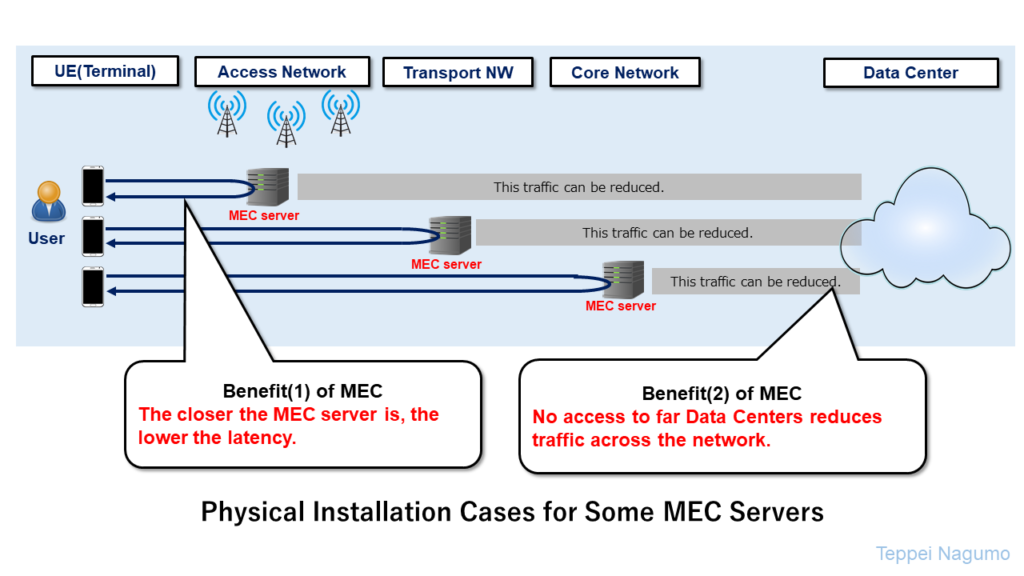
MEC (Multi-access Edge Computing) was being considered for mobile connectivity systems, but it has been widely adopted for communications including fixed network field.
5G Core Network (5GC)
The core network EPC (Evolved Packet Core) for 4G mobile network is expected to replace 5G Core (5GC) in the process of 5G enhancement. In 5GC, the specifications of the core network have been completely renewed to make it easier to realize edge computing (MEC: Multi-Access Edge Computing).
In 5GC, as CUPS (Control and User Plane Separation), the control plane (C-Plane) function and the user data traffic (U-Plane) function are clearly separated. The control plane for signaling message is centrally deployed. User plane functions such as gateways are distributed.
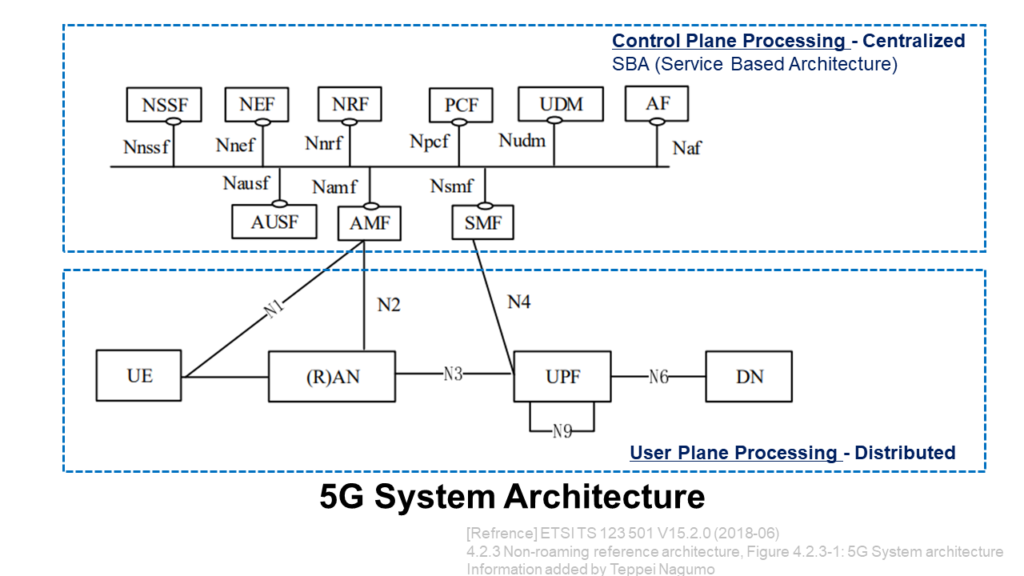
For more information about 5GC, please refer to the following blog post.
Network Slicing
By supporting 5G for terminals (smartphones and IoT devices), Access Network, and Core Network, a function called “Network Slicing” can be used. Network Slicing is the function to configure several different logical networks apart from the physical network infrastructure.
The necessary resources (communication port, bandwidth, CPU and memory area of network equipment, etc.) on the network are individually allocated or released for each call/session or same SLA connection. Individually allocated network resources are called “Slice”. In 5G, the service level required for communication differs for each slice.
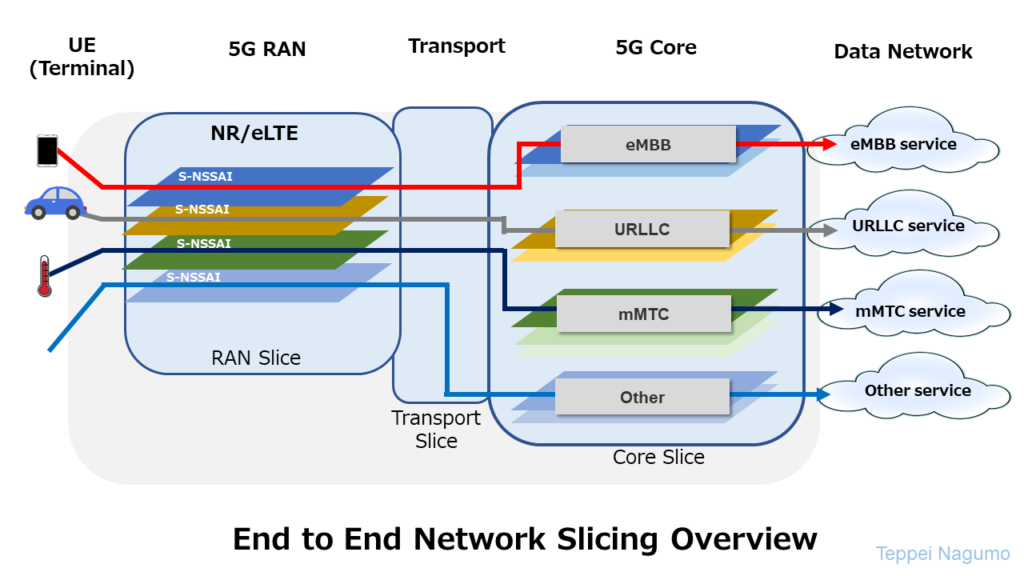
Network slicing requires end-to-end functionality support from the terminal (User Equipment) to the Access Network and Core Network. Therefore, the early stage 5G specifications NSA (None-Stand Alone) do not support network slicing. It becomes 5G SA (Stand Alone), Core Network becomes 5GC (5G Core), and network slicing can be provided by functionally supporting terminals and Access Network.
By preparing ultra-high-quality slices individually using Network Slicing technology, it is possible to achieve ultra-high-quality connection. By preparing network slices with different service qualities, it becomes a network that can flexibly respond to various services.
5G characteristic [3]: Multiple connection (mMTC: massive Machine Type Communication)
Massive-IoT (Massive Internet of Things) and IIoT (Industrial-IoT)
In 5G era, the number of non-smartphones IoT devices connected to the network will significantly increase. Sensors and smart meters, called LPWA (Low Power Wide Area), are designed to communicate with 5G Networks with extremely low power. LPWA terminal batteries last 10 years or more.
LPWA for IoT is divided into cellular LPWA and non-cellular LPWA. Cellular LPWA, which is standardized by the international standardization organization 3GPP, is technically superior. Cellular LPWA has already been put into commercial use as eMTC and NB-IoT since the era of 4G LTE. IoT connectivity using 5G New Radio is called NR-IoT (New Radio IoT). NR-IoT enable more power-saving and efficient IoT wireless connectivity than before.
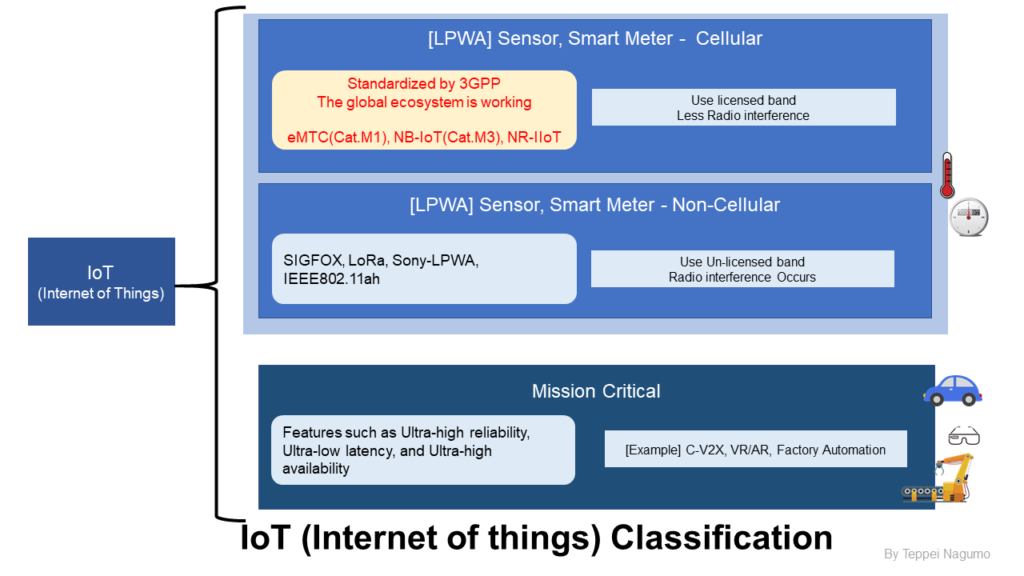
In 5G era, as IIoT (Industrial IoT) as IoT in the industrial field, it is assumed that production equipment and devices in various industries will be connected to the Internet through 5G.
Connected Car (V2X: Vehicle-to-Everything)
As 5G commercialization progresses, automobiles will communicate using 5G networks. One of the technologies that support autonomous driving is about to become 5G connectivity. Automobiles will now communicate with traffic lights and pedestrians (smartphones, wearable devices, etc.), improving traffic efficiency and safety.
V2X (Vehicle to everything) is a connectivity that was conceived as a specification for automobiles to communicate with various things. As C-V2X (Celler-V2X), 5G (New Radio) and 4G (LTE) mobile phone networks are being used for autonomous driving. An organization called 5GAA (5G Automotive Association) is promoting C-V2X with the aim of introducing 5G technology into vehicles and developing various services and solutions.
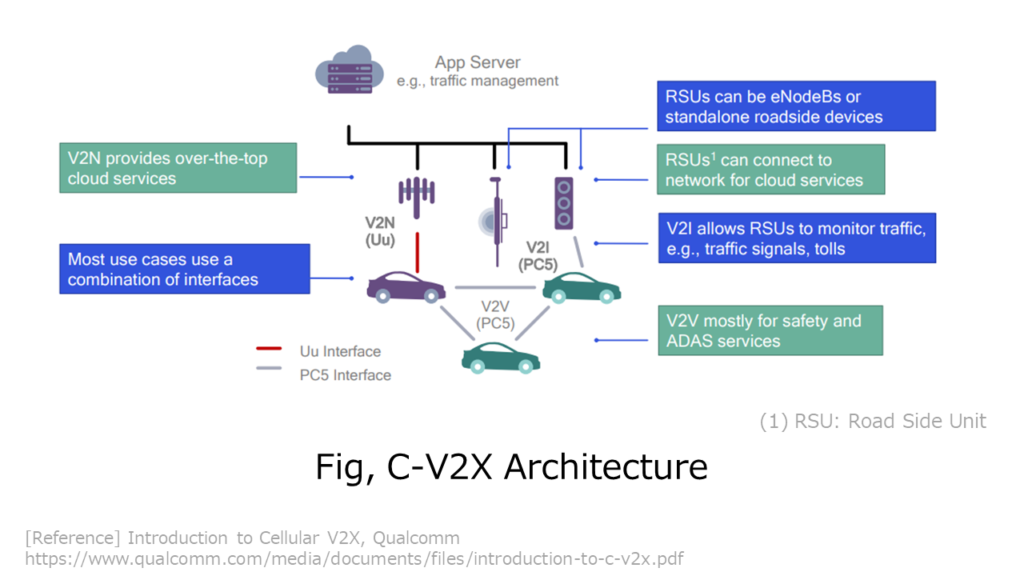
For more information about C-V2X, please refer to the following blog post.
Summary
In this article, we have organized three characteristics regarding 5G. These characteristics are [1] “high speed and large capacity” (eMBB: enhanced Mobile Broadband), [2] “low latency and high reliability” (URLLC: Ultra-Reliable and Low Latency Communications), [3] massive connection (mMTC: massive Machine Type Communication).
In addition to the characteristic introduced in 5G, network virtualization and Could-native are progressing.
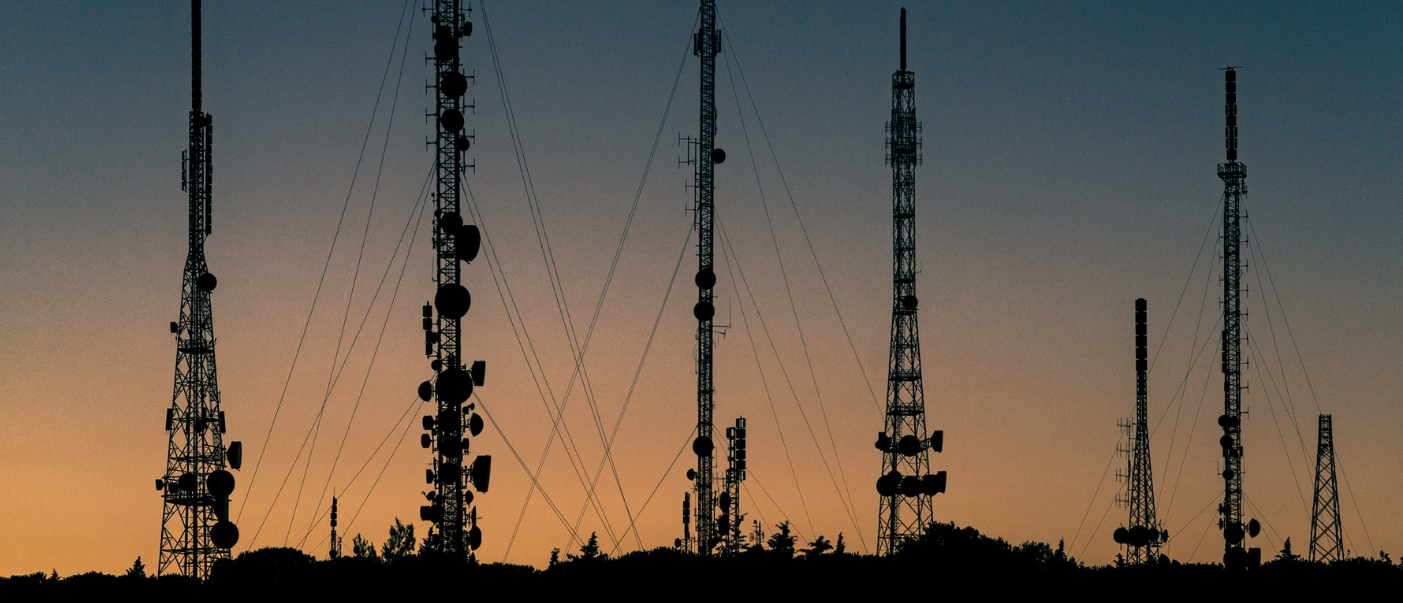




コメント